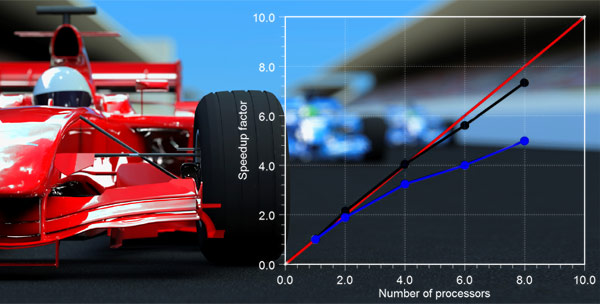|
|
|
 |
MIKE by DHI Release 2011 is here!
- Better than ever
We almost forgot to tell you - it's on your doorstep if not already in your hands!
We have a few announcements to make: |
|
What's new? |
Release 2011 is continuing our efforts toward greater usability, flexibility and seamless integration.Yet again many new important features have been added and likewise significant performance improvements have been made, which will further help our users and inevitably push the boundaries of modelling even further. Release 2011 will undoubtedly help the MIKE by DHI users win and complete even more projects successfully. For more information - including Release flyers - please refer to: http://mikebydhi.com/News/Release2011.aspx To download Release 2011 please click below:
http://mikebydhi.com/Download/MIKEByDHI2011.aspx
|
|
Practical info on the Release 2011 – and information on events around the world |
From customer care we have had busy days shipping the release 2011 around the world. In the release package you will find a cover letter along with an installation guide covering all products. Release News on all products are also included covering the major new features for each product. For some products extra material is included. In addition to this you will also find regional course calendars for 2011 and information on upcoming events in your region. We have a number of exciting events around the world this year. You can find more on this on: http://www.mikebydhi.com/Events/Globaleventscalendar.aspx - new events are added continuously. We hope to see many of you at these events. 2011 offers not only a new release but also the possibility to get access to additional licenses and hardware within minutes through the new MIKE by DHI SaaS portal. For further on this please refer to the flyer distributed in the release package or contact your local DHI office. |
|
Important notice to MIKE BASIN and MIKE Zero users |
Please note that a service pack is available for both MIKE BASIN and MIKE Zero users. The service packs can be found on: http://www.mikebydhi.com/Download/MIKEByDHI2011ServicePacks.aspx. After the installation of the 2011 release it is therefore very important to launch the installation of the service pack. . |
|
Important notice to MIKE C-MAP users |
MIKE C-Map 2011 now supports both 32 bit and 64 bit XP Professional, Vista Business and 7 Professional operating systems. However, to be able to use the 2011 version requires a new eToken dongle/key for acessing the C-Map Professional+ digital chart database from Jeppesen Marine Norway. To our MIKE C-Map users with service agreement a key replacement note is enclosed in the release 2011 shipment package. This note tells you about various options and steps to make to get the new dongle for the C-Map charts. Please read this Correction to information provided in the leaflet ‘Installation guide’ enclosed in the Release 2011 shipment: Replace: “Please note that extraction of tidal information requires C-Map CM93/3 Professional+ chart database version 460 or later.” With this: “To obtain full functionality with MIKE C-MAP 2011, ie also to be able to extract tidal information, requires C-Map Digital Chart database CM93/3 Professional+ version 274 or later versions, ie chart databases from after November 2007.”
|
|
What's behind? |

One of the main focus points with Release 2011 has been performance. This is evident from the list of products now utilizing parallel processing: MIKE 21 Spectral Wave Model FM MIKE 21 Flow Model FM MIKE 3 Flow Model FM MIKE 21/3 Coupled Model FM MIKE 21 Boussinesq Wave Model MIKE 21 Flow Model Classic MIKE 21 Flow Model Curvilinear MIKE FLOOD MIKE SHE
In particular the flexible mesh series have undergone a significant optimization process through the use of parallelization using MPI. Using this technology the performance is close to the theoretical limit in terms of scalability. The distribution of work and data is based on the domain decomposition concept and Message Passing Interface (MPI) is used for communication between processors. The computational mesh is partitioned into a number of sub-domains and the work associated with each sub-domain is processed by an individual processor. The data exchange between processors is based on the halo-layer approach with overlapping elements. The above graph displays the relative speed gain as a function of the number of cores utilized for a MIKE 21 Flexible mesh model. The black curve displays results using the MPI approach while the blue curve are the results using OpenMP. The user can choose between the two approaches when launching the flexible mesh simulation.
|
|
Copyright DHI. All rights reserved

This newsletter was sent to you by DHI in response to your registration.
All details are treated confidentially and will not be transferred to third party. |